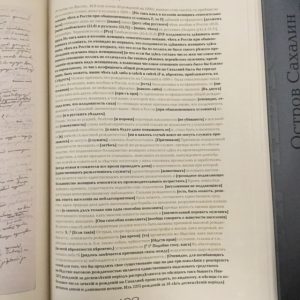Welcome to the Irtysh River, with its city Tobolsk on the cliff above.
On 7 May 1890, not even 1/3 of the way into his journey across Siberia, Chekhov sits in a hut on the banks (upriver, actually, not in Tobolsk, but close enough) and writes a letter to Maria Kiselyova.
My God, I have never experienced anything like this in my whole life! Cruel wind, cold, disgusting rain; you have to get out of the tarantas (which is not covered) and hold the horses: you can only lead the horses over every bridge one by one… Where have I ended up? Where am I? All around is desolation, misery (pustynia, toska); ahead is the bare, gloomy shore of the Irtysh…
Why did Chekhov travel to Sakhalin? The world was his cupcake–he was one of Russia’s most famous writers; he had reached a brilliant stage in his career; he had a productive life in Moscow, tons of friends, publishers eating out of his hands and begging for more, women falling for him right and left. On the debit side, he was in poor health, as pretty much through his adult life, and, as he must have known though he would not admit it, ill with the tuberculosis that would kill him within 14 years.
Why did Chekhov travel to Sakhalin? I am certainly not going to answer this question–no one can. But anyway here I am on this journey, and we have reached this point.
For my colleague and neighbor Radiskav Lapushin, the Irtysh-bank letter to Kiselyova serves as a kind of epicenter for an existential crisis. Chekhov finds himself at this moment alone, hearing the sound of knocking on coffins down deep in the river, and wondering what on earth he is doing here in the middle of nowhere, or in fact, we can add, what is he doing on earth. (Radik’s article can be found at the center of our book, Chekhov’s Letters, where it too serves as a kind of epicenter). Yes, the writer is not just having a bad day. He is writing about what it is like to be alive when everything that makes sense is peeled away. It is a human thing, not merely a writer thing, a Chekhov thing, or a Siberia thing.
During my journey I have had several sightings of the Irtysh, and each one brought me back to this letter, and to Radik’s thoughts about it, and Chekhov’s questions keep rising up.



You may remember this view (to your right, if you’re on an actual computer) on the Irtysh river plain from our last post, the scene that served as the setting for Surikov’s Ermak painting. The small river in the foreground is not the Irtysh, it is just a kind of side stream from it. The Irtysh is just barely visible in the background. Trust me, it is there. Look up from the river in each photo and take note of the story that the clouds are telling above it. The sky in Siberia is big. To put it another way, citing Siberian writer Valentin Rasputin, who himself spent time here: “there is a lot of sky”(здесь много неба).
Soon, in Omsk, we will visit the Irtysh again, where it will take us deep into the epilogue of Crime and Punishment, and Raskolnikov will join us and Chekhov on the shore, along with Dostoevsky himself.
But it is hard to tear ourselves from Tobolsk. Things keep happening here.

Sterliad and Vodka
Sterliad’ from the Irtysh is so pure that unlike all other kinds of fish from the river, which have retained pollutants, it can be eaten frozen and raw. If you are incredibly lucky, Arkady Grigorievich will treat you to this sterliad’ sashimi in his restaurant at the Sibir hotel, where you will be so transfixed by the experience that it will not occur to you to take a photo. It is served with a pickly garnish, and with vodka, the best available (also frozen). Vodka is an excellent disinfectant, good for the immune system. And sterliad’, and Siberia, beg for it.
Oh my goodness.
Your companion eats the backbone, crunching the delicate bones, and so you do too.
Soon there will be Irtysh sudak, cooked in a creamy sauce. And ½ a napoleon.
Hydrate, Carol.
But Chekhov!! Pull yourself together. Remember why you have come all this way.
The Island of Sakhalin
Arkady Grigorievich brings over something heavy in a big plastic bag and thumps it down on my table. He says, look at this overnight. He says, there is only one of these; it has just come out of the press, it’s the first one. He says, see you tomorrow.
Then he leaves.



There are two volumes. One is a facsimile of the manuscript of Chekhov’s book, The Island of Sakhalin, with the author’s hand-written corrections and crossings-out. The other one contains an analysis of the text, along with the manuscript, photographed now using a special method that allows the wording under the deletions to be revealed. The nature and number of the author’s corrections are tabulated, and the restorations are shown in the printed text of the book, in parallel text format.





Yes, now I do remember why I came all this way. Yes, there is a tear in my eye. Astonishingly, I am not even a third of the way through my journey.
Now I must leave Tobolsk, and read every word of this book, and continue on my way to Sakhalin.

Leave a Reply